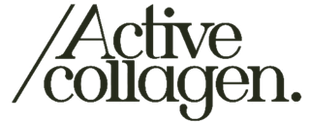Polycystic Ovarian Syndrome, or more commonly known as PCOS (pee-cos), is a prevalent reproductive health issue amongst women of reproductive age, where estimates show 1 in 10 women struggle with PCOS prior to menopause. And a lot of those affected go undiagnosed. Due to its prevalence, PCOS has definitely received a great deal more of attention recently and women are becoming more aware of what to look out for.
Generally, PCOS is defined as having 2 or more of the following, known as the Rotterdam criteria:
- Menstrual cycles that are 35 days or longer in length, occurring infrequently (8 times a year or less)
- Cysts on the ovaries shown via pelvic ultrasound.
- Androgen excess (male dominant hormones), shown as either excess facial hair growth, high testosterone, acne or hair loss.
Although, PCOS can be a tricky one to point out as it is heterogeneous, presenting with many signs that have different root causes. The confusion around reproductive disorders like PCOS can be overwhelming as many of the symptoms may overlap with other reproductive conditions that also impact the risk of infertility.
To give you a better understanding, we’ve highlighted some of the extra information that is crucial for understanding PCOS and different ways it can be managed.
PCOS Diversity
The Rotterdam criteria is the most widely used diagnostic tool for PCOS. However, PCOS can include super diverse presentations that are influenced by diet and lifestyle. Which may rule out ovarian cysts as a definite determinant of the syndrome.
Many undiagnosed women struggle with psychological issues such as low self-esteem, high stress, depression and anxiety, and disordered eating patterns. These may be influenced by weight gain – particularly abdominal adiposity – that also accompanies the condition.
There are also quite a few metabolic features in those with PCOS including insulin resistance which puts them at higher risk of developing conditions such as type II diabetes and metabolic syndrome, among other comorbidities like cardiovascular disease.
These differing factors, including those of the Rotterdam criteria, can all greatly impact reproductive hormone networks. The hypothalamic-pituitary-ovarian (HPO) axis is a closely modulated network of hormone signals that responds to both internal and external factors that may upset this signalling. When it becomes impaired reproduction is affected i.e. anovulatory cycles and difficulties falling pregnant. This is particularly evident when there is a high level of luteinizing hormone compared to follicle-stimulating hormone which causes high ovarian androgen production and effects the maturation of an ovarian follicle.
Different Types of PCOS
Insulin resistant PCOS: Insulin resistance (IR) is found in around 35-80% of women with PCOS even without common causes such as high BMI and abdominal adiposity. IR involves not being able to uptake circulating insulin into the cells therefore there are high circulating amounts. Insulin resistance in the ovaries has shown to cause an overproduction of androgens, the culprit of facial hair (hirsutism) and high testosterone.
Adrenal PCOS: Adrenal PCOS involves a hypersecretion of androgen hormones from the adrenal gland often caused by high stress. A sign of adrenal PCOS is elevated levels of DHEA opposed to high levels of testosterone shown in a blood test.
Post-Pill PCOS: When taking oral contraceptives our bodies are suppressed from making our own hormones sufficiently. After taking oral contraceptives there may be an increase in androgen hormones produced which can throw our female dominant hormones out of whack.
Inflammatory PCOS: Increased inflammation within the body regardless of whether it is directly involved in reproduction – think SIBO, coeliac disease or even too much dietary sugar– can affect follicle growth and ovulation. Evidence shows high levels of inflammation in PCOS correlates with androgen excess, which may suggest a strong underlying cause.
Managing PCOS
As PCOS comes in many forms, management isn’t one size fits all. As peoples PCOS priorities can vary from getting their menstrual cycles back on track or reducing high androgen symptoms, losing weight or increasing fertility, approaches to treatment should be individualised. Although, there are a few management approaches that have positive impacts.
Managing your stress cannot be stressed enough for PCOS, literally! As high stress is shown to be a driver in adrenal PCOS and irregular cycles in general, applying stress reducing strategies in your everyday can only be beneficial. These could include reducing your exercise intensity and opting for something like yoga or Pilates, reading a few pages of a book before going to sleep, or simply taking more time out to enjoy a meal. Whatever works for you.
Adequate exercise, but not too much, is arguably more beneficial than some dietary changes for PCOS. This is due to exercise improving insulin resistance, reducing abdominal adiposity and enhancing psychological well-being, which help regulate menstrual and ovulatory functions.
A dietary approach that could however be implemented in most cases is the wholefood approach. Choosing an abundance of fibre rich foods such as fresh vegetables, legumes and wholegrains, along with getting enough quality protein is beneficial. Plus, a majority of these wholefoods are lower GI foods and lower in saturated fats which help to reduce systemic inflammation and promote healthy weight loss.
Our nourishing hot chocolate blend Active Cycle is the perfect low GI accompaniment for when you’re craving something sweet that you know will also replenish those cycle supporting nutrients. It may even become a part of your new stress reducing routine!
Witchel, S. F., Oberfield, S. E., & Peña, A. S. (2019). Polycystic Ovary Syndrome: Pathophysiology, Presentation, and Treatment With Emphasis on Adolescent Girls. Journal of the Endocrine Society, 3(8), 1545–1573. https://doi.org/10.1210/js.2019-00078
Himelein, M. J., & Thatcher, S. S. (2006). Polycystic ovary syndrome and mental health: A review. Obstetrical & gynecological survey, 61(11), 723–732. https://doi.org/10.1097/01.ogx.0000243772.33357.84
Sadeghi, H. M., Adeli, I., Calina, D., Docea, A. O., Mousavi, T., Daniali, M., Nikfar, S., Tsatsakis, A., & Abdollahi, M. (2022). Polycystic Ovary Syndrome: A Comprehensive Review of Pathogenesis, Management, and Drug Repurposing. International journal of molecular sciences, 23(2), 583. https://doi.org/10.3390/ijms23020583
Escobar-Morreale H. F. (2018). Polycystic ovary syndrome: definition, aetiology, diagnosis and treatment. Nature reviews. Endocrinology, 14(5), 270–284. https://doi.org/10.1038/nrendo.2018.24
Rojas, J., Chávez, M., Olivar, L., Rojas, M., Morillo, J., Mejías, J., Calvo, M., & Bermúdez, V. (2014). Polycystic ovary syndrome, insulin resistance, and obesity: navigating the pathophysiologic labyrinth. International journal of reproductive medicine, 2014, 719050. https://doi.org/10.1155/2014/719050
Medeiros, S. F., Barbosa, B. B., Medeiros, M. A. S., Yamamoto, A. K. L. W., & Yamamoto, M. M. W. (2022). Adrenal Androgen Predictive Effects on Clinical and Metabolic Abnormalities of Polycystic Ovary Syndrome. Efeitos preditivos dos androgênios adrenais nas anormalidades clínicas e metabólicas da síndrome dos ovários policísticos. Revista brasileira de ginecologia e obstetricia : revista da Federacao Brasileira das Sociedades de Ginecologia e Obstetricia, 44(2), 142–153. https://doi.org/10.1055/s-0041-1741030
González F. (2012). Inflammation in Polycystic Ovary Syndrome: underpinning of insulin resistance and ovarian dysfunction. Steroids, 77(4), 300–305. https://doi.org/10.1016/j.steroids.2011.12.003
Woodward, A., Klonizakis, M., & Broom, D. (2020). Exercise and Polycystic Ovary Syndrome. Advances in experimental medicine and biology, 1228, 123–136. https://doi.org/10.1007/978-981-15-1792-1_8




